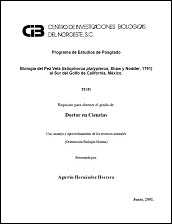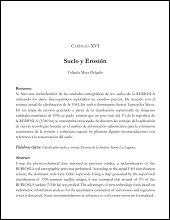Esters biotransformation by immobilized interfacial esterases from the Caribbean Sea anemone Stichodactyla helianthus
Biotransformación de ésteres por esterasas interfaciales inmovilizadas a partir de la anémona marina Stichodactyla helianthus
Resumen
"An immobilized biocatalyst (ShIE-Octyl) was obtained by interfacial adsorption on Octyl-Sepharose CL 4B sup¬port of all interfacial esterases from the aqueous extract of the sea anemone Stichodactyla helianthus. ShIE-Octyl, synthesized by this simple method, contains semipurified interfacial esterases, including the isotoxins StI and StII. The immobilized esterases are maximally stable at pH 7.0 for p-nitrophenylacetate hydrolysis (determined spec¬trophotometrically at 348 nm) during 6 days, although immobilization does not enhance the stability of the soluble enzymes toward pH. In contrast, immobilization appreciably increases the stability toward temperature and organic solvents. ShIE-Octyl shows 90 % residual activity after 6 days at 30 °C, and maintains at least 85 % initial activity in presence of 10 % methanol or acetonitrile. The immobilized derivative catalyzes the hydrolysis of the pharmaco¬logically relevant esters: naproxen methyl ester, 2-oxyranylmethyl acetate (OMAc), methyl-prostaglandin A2 and ethyl-2-hydroxy-4-phenyl butanoate (HPBEt) (determined by RP-HPLC or HPTLC) with 95-100 % conversion in 6240 min, and tolerates 20 % organic solvents. The immobilized biocatalyst is selective for esters with simple alcoholic and complex acid structures, but showing the infrequent ability to hydrolyze esters with heteroatomic or aromatic alcoholic substituents, such as phenylethyl butyrate and 7-aminocephalosporanic acid. ShIE-Octyl is S-stereoselective in the bioconversion of chiral HPBEt and OMAc, and R-stereoselective in the hydrolysis of naproxen methyl ester in presence of 10 % methanol or acetonitrile. The selectivity by (S)-OMAc is favored at low temperature (4 °C) and buffer ionic strength (10 mM sodium phosphate). The enantioselectivities toward naproxen methyl ester and OMAc are unusual; then are particularly relevant." "Biotransformación de ésteres por esterasas interfaciales inmovilizadas a partir de la anémona marina Stichodactyla helianthus. Se obtuvo un biocatalizador inmovilizado (ShIE-Octyl), mediante la adsorción interfacial en el soporte Octyl-Sepharose CL 4B de todas las esterasas interfaciales del extracto acuoso de la anémona marina Stichodactyla helianthus. El ShIE-Octyl sintetizado mediante este método simple contiene esterasas interfaciales semipurificadas, incluidas las isotoxinas StI y StII. Las esterasas inmovilizadas tienen estabilidad máxima a pH 7.0 para la hidrólisis de p-nitrofenil acetato (determinada espectrofotométricamente a 348 nm) durante 6 días, 90 % de la actividad residual a 30 ºC posteriormente, y conservan el 85 % de la actividad inicial en presencia de metanol o acetonitrilo 10 %. La inmovilización no incrementa la estabilidad de las enzimas solubles frente al pH y sí frente a la temperatura y los solventes orgánicos. El biocatalizador hidroliza los ésteres farmacológicamente relevantes: éster metílico del naproxeno, acetato de 2-oxiranilmetilo (OMAc), metil-prostaglandina A2 y 2-hidroxi-4-fenil-butirato de etilo (HPBEt), determinada mediante RP-HPLC o HPTLC, con 95-100 % de conversión en 6240 min, y tolera solventes orgánicos al 20 %. La enantioselectividad frente a los dos primeros es inusual y particularmente relevante. Además, es selectivo por ésteres con estructuras ácidas complejas y alcohólicas simples, aunque hidro¬liza aquellos con sustituyentes alcohólicos aromáticos o heteroatómicos, como el butirato de feniletilo y el ácido 7-aminocefalosporánico. Es S-estéreoselectivo en la bioconversión de HPBEt y OMAc quirales, y R-estéreoselectivo en la hidrólisis del éster metílico del naproxeno en presencia de metanol o acetonitrilo 10 %. La selectividad por (S)-OMAc se favorece a baja temperatura (4 °C) y fuerza iónica del tampón fosfato de sodio (10 mM)."
Colecciones
Ítems relacionados
Mostrando ítems relacionados por Título, autor o materia.
-
PROMOCIÓN DEL PERIFITON PARA EL CULTIVO DE CAMARÓN BLANCO: HACIA UNA ACUICULTURA ECOLÓGICA
DOMENICO VOLTOLINA LOBINA; JUAN MANUEL AUDELO NARANJO; MARIA DEL ROSARIO PACHECO MARGES -
Suelo y Erosión
YOLANDA LOURDES MAYA DELGADO


